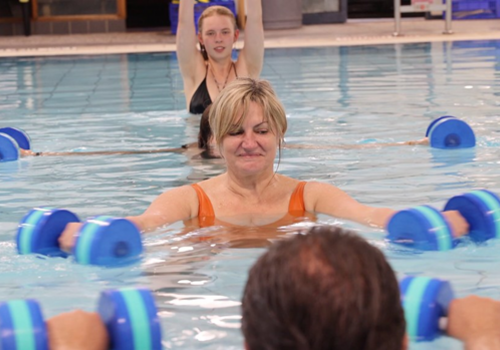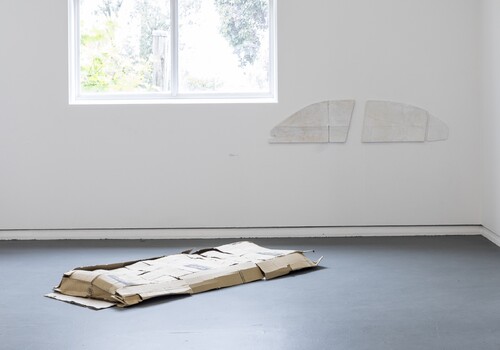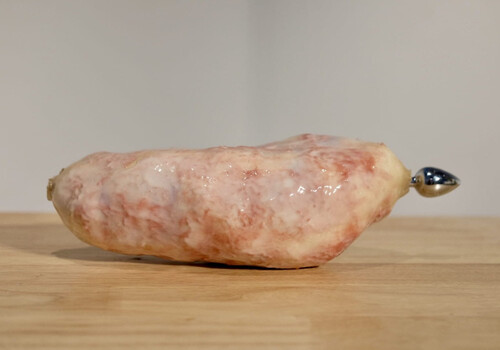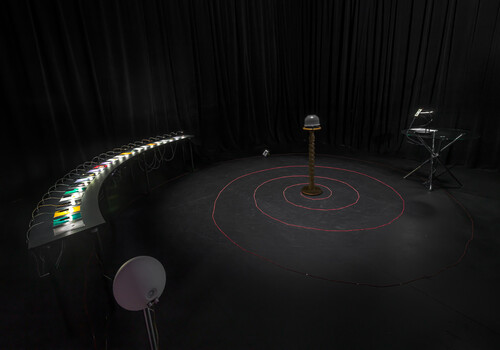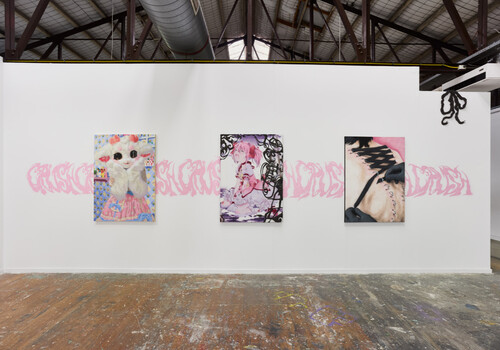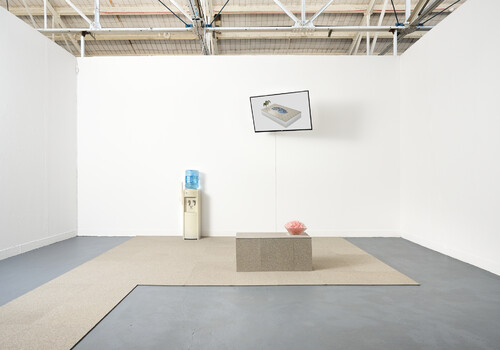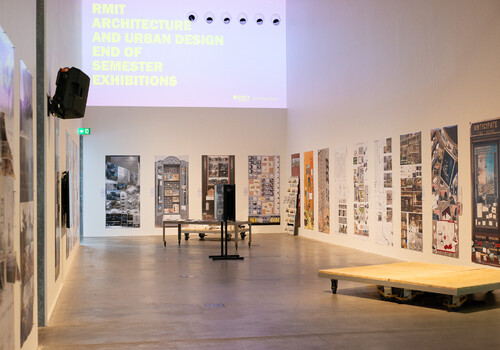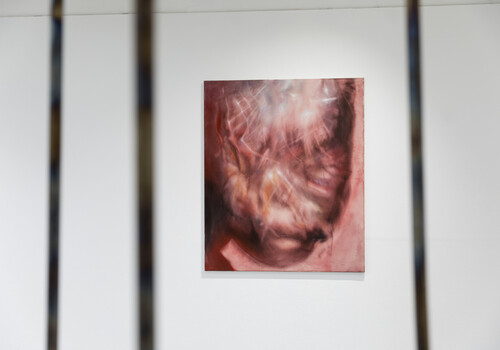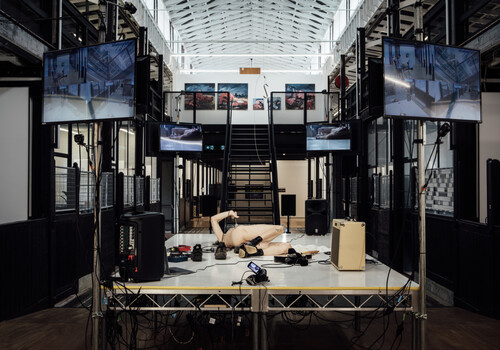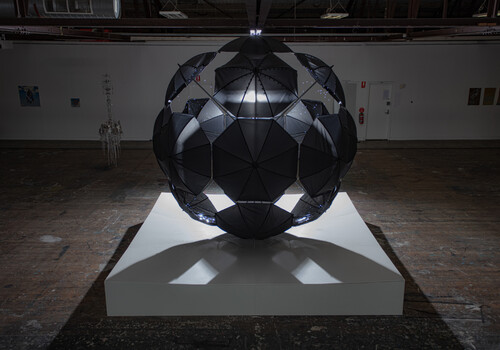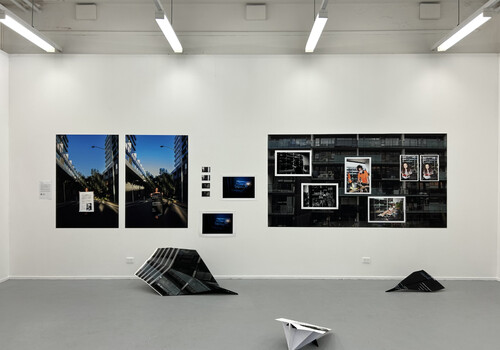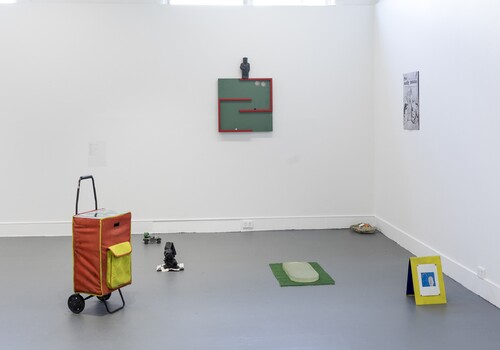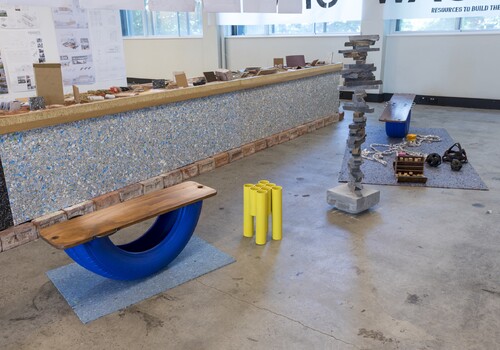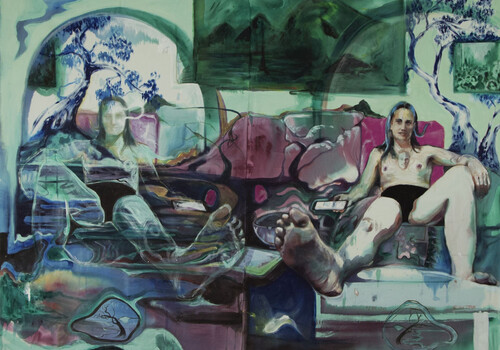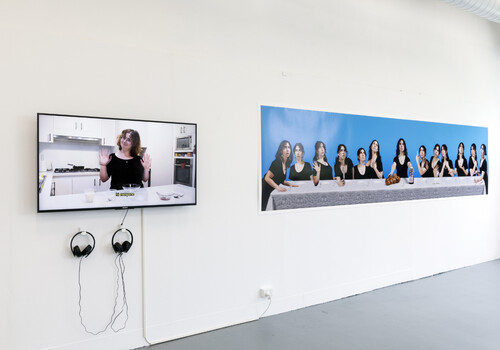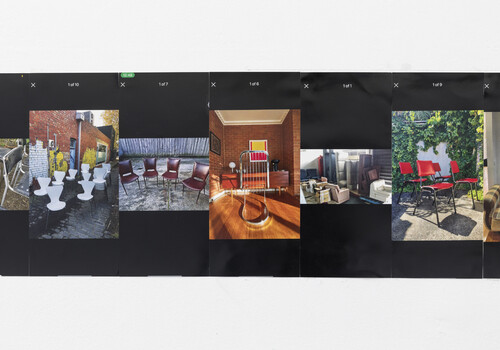Bachelor of Fine Art, MADA
By Dianne Erlichman
As you enter the Bachelor of Fine Art exhibition spaces at MADA Now 2023, you will see two video installations by culturally diverse artists: Miracle Mak and Shaked Gozlan.
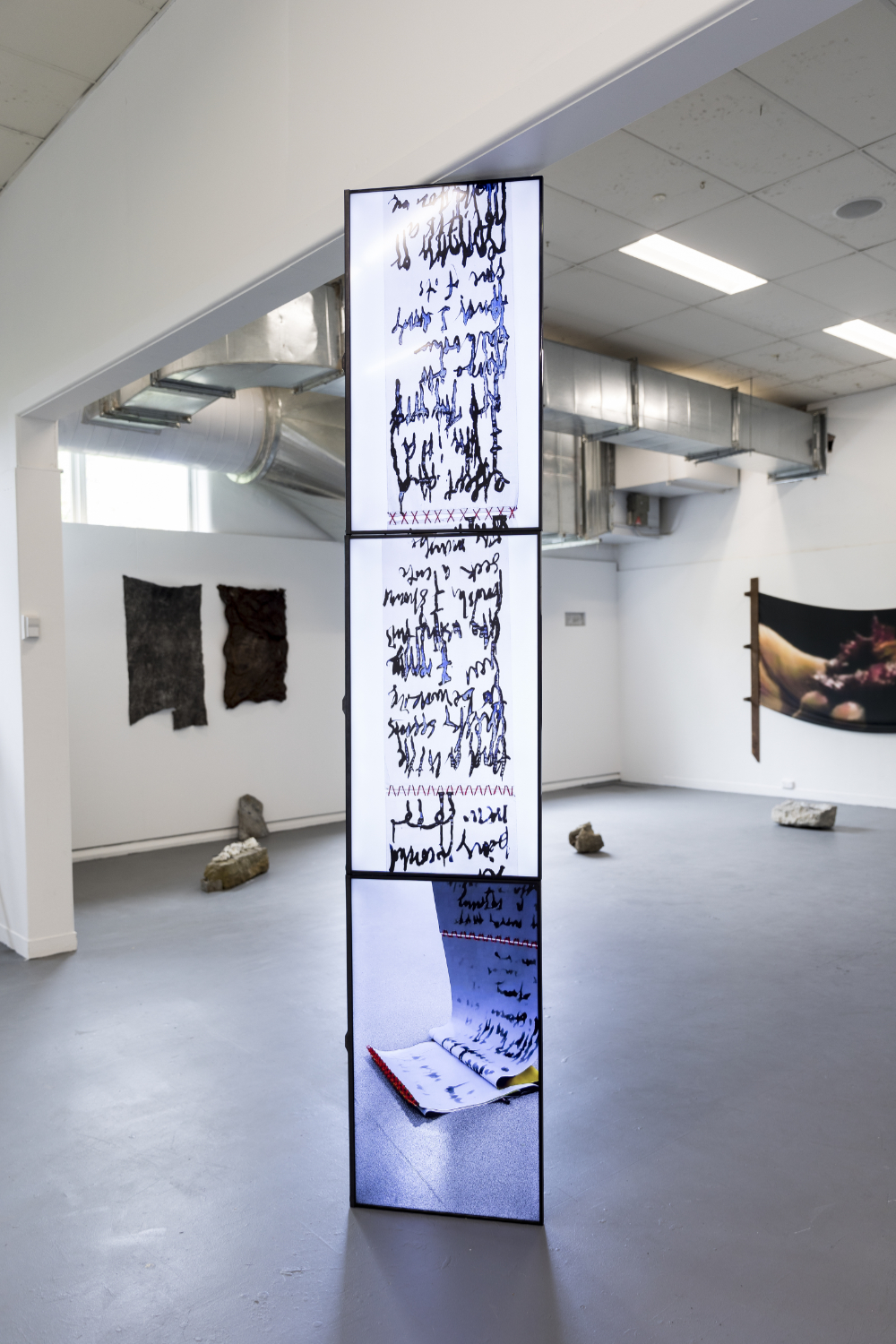
Mak’s three-channel vertical video installation Inner Dialogue (2023) is situated at the centre of the first gallery space, with screens facing the entrance. Each screen shows the repetitive, gentle process of calligraphic brushwork on white paper scrolls, which are connected with red cotton thread. The audio component of the work is comprised of the diegetic sounds of the brush tapping the glass jar and sweeping across the paper.
There is a sense of the eternal conveyed by these repetitive gestures. Each screen alternates images of scrolling pages folding downwards, the brush as it is dipped in the water, and the brush moving across the paper, all the while the calligraphic brush strokes bleed upwards as if defying gravity. Mak’s work has similarities with the calligraphy and ink painting of contemporary artist Xu Bing, who invented his characters and ideograms to play with history.
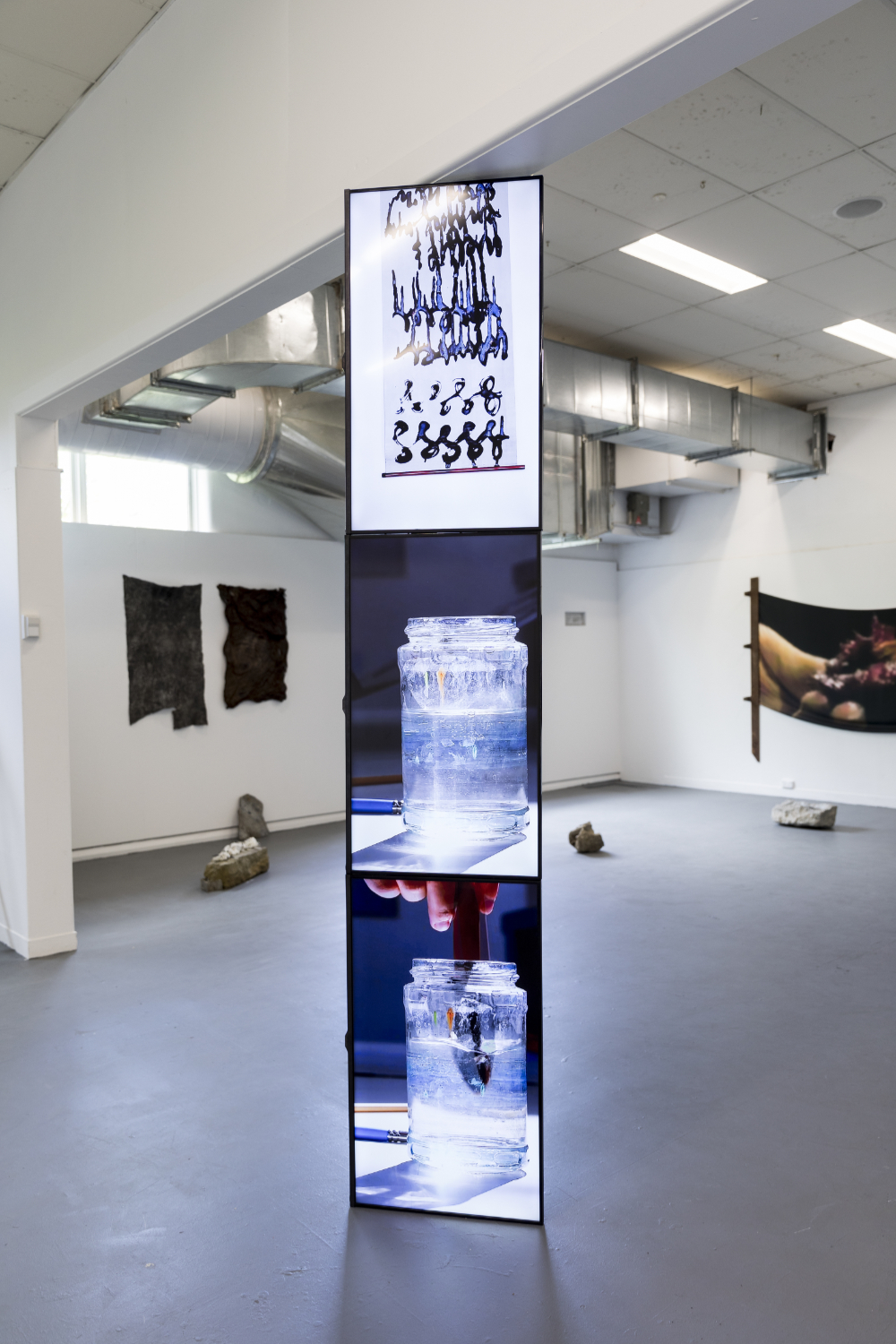
The calligraphic marks are not only illegible, but also, given that the paper scrolls down onto the floor, they appear to reclaim the words as the water dries. Mak’s work is mesmerising, while it veils meaning, leaving the viewer wanting to know more.
Gozlan uses her physical presence in the subtitled video performance Let’s Get Baking: A Guide to Blood Libels (2023). She is in her kitchen, smiling at the camera while showing the viewer how to prepare and bake matzah, a special flat bread eaten during Pesach, a significant Jewish holiday. The Jewish folk song Hava Nagila (Let Us Rejoice), sung at celebrations, is used as a joyful, manic, and irritatingly incessant audio backdrop.
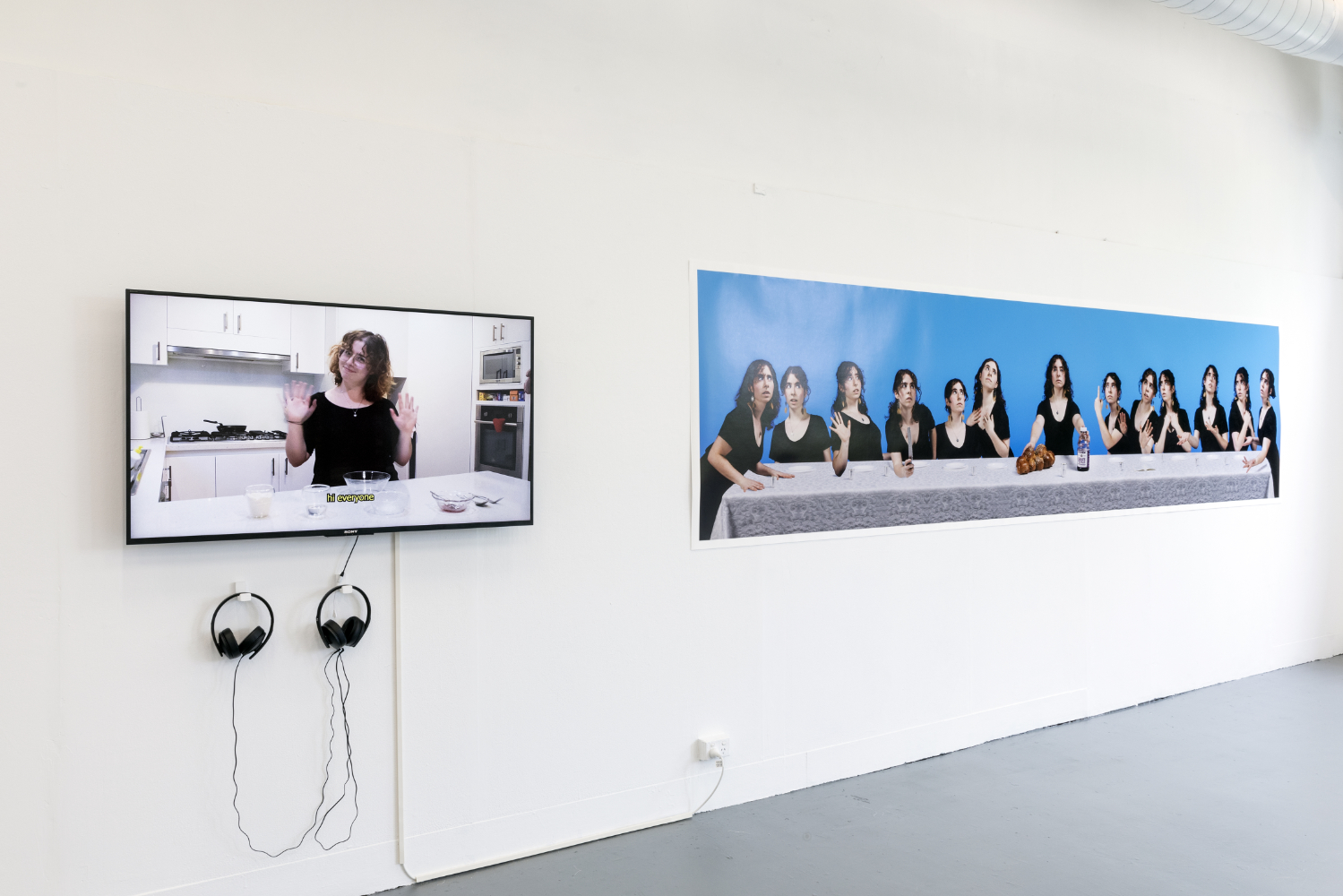
A disturbing subtitle appears in the video, advising the viewer to add “local Christian baby blood!” to the matzah. Since 1144 CE, despite the kosher laws forbidding any trace of blood in food, Jews have been accused of killing Christian children to use their blood for religious rites, resulting in murder and expulsions. Gozlan’s presentation is timely and significant in light of the current rise in threats experienced by the Jewish community globally. At the conclusion of the performance, a smiling Gozlan spreads some extra “blood” on the baked matzah, and takes a bite while the text “yum” appears on the video.
Comedy and satire, when used to create emotional dissonance, play an important role in challenging the viewer to address critical social issues. Along these lines, Gozlan expertly marries the serious blood libel accusation with inappropriate celebratory music. Her smiles and coquettish gestures highlight the long history of anti-semitic tropes which have promoted hatred against the Jewish people.
In contrast to Miracle Mak’s cultural and philosophical artistic approach, which is mysterious, meditative and peaceful, Shaked Gozlan’s volume of expression is loud and clear.
Di Erlichman is an artist whose work examines and queries the complex relations between history, forms of personal, collective, and institutional memory, belief systems and culture. She uses recycled, and raw materials and processes to inform the narrative.
